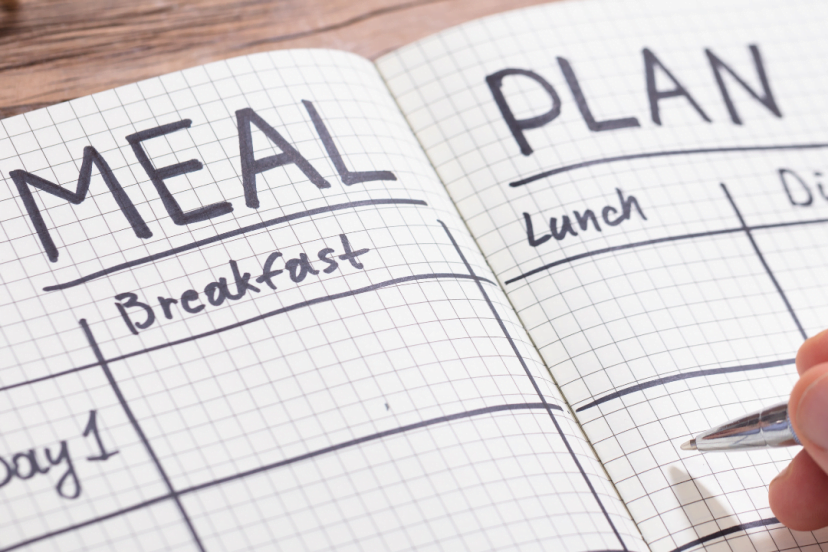An Introduction to Carb Cycling Meal Plan for Busy Professionals
Introduction
In today’s fast-paced world, busy professionals often find it challenging to maintain a healthy diet and stay in shape. However, nutrition plays a crucial role in overall well-being and productivity. One effective strategy that can help busy professionals optimize their nutrition and achieve their fitness goals is carb cycling. In this article, we will explore the concept of carb cycling, its benefits, and how to create a carb cycling meal plan that suits the lifestyle of busy professionals.
Understanding Carb Cycling
What is Carb Cycling?
Carb cycling is a dietary approach that involves alternating between high-carb and low-carb days. It aims to strategically manipulate carbohydrate intake to optimize energy levels, promote fat loss, and enhance athletic performance. By varying carbohydrate intake, carb cycling helps to keep the body responsive to insulin, improve metabolic flexibility, and prevent plateaus in weight loss.
How Carb Cycling Works
Carb cycling works by manipulating carbohydrate intake to match the body’s energy demands on different days. On high-carb days, more carbohydrates are consumed to fuel intense workouts and provide energy for physical activities. On low-carb days, carbohydrate intake is reduced to promote fat burning and encourage the body to utilize stored fat for fuel.
Benefits of Carb Cycling for Busy Professionals
Carb cycling offers several benefits for busy professionals:
1. Enhanced Energy Levels:
- By strategically timing carbohydrate intake, carb cycling ensures that you have sufficient energy to power through demanding workdays and workouts.
2. Fat Loss and Weight Management:
- The low-carb days in a carb cycling meal plan promote fat burning and help in achieving and maintaining a healthy body composition.
3. Improved Mental Clarity:
- Balanced carbohydrate intake supports stable blood sugar levels, which can enhance mental focus, concentration, and productivity.
4. Muscle Preservation:
- Carb cycling allows you to maintain muscle mass while losing fat by providing adequate carbohydrates on high-carb days to support muscle recovery and growth.
Getting Started with Carb Cycling
Determining Your Daily Caloric Needs
To get started with carb cycling, it’s essential to determine your daily caloric needs. Use an online calculator or consult with a nutritionist to estimate the number of calories required to maintain your current weight based on your age, gender, weight, height, and activity level.
Calculating Macronutrient Ratios
Once you know your daily caloric needs, you can calculate the macronutrient ratios for your carb cycling meal plan. A typical carb cycling approach involves higher carbohydrate intake on high-carb days, moderate intake on rest days, and lower intake on low-carb days. For example, you might aim for a ratio of 40% carbohydrates, 30% protein, and 30% fat on high-carb days, while adjusting the ratios for low-carb and rest days accordingly.
Choosing the Right Carbohydrate Sources
When it comes to carb cycling, the quality of carbohydrates is as important as the quantity. Focus on choosing complex carbohydrates such as whole grains, legumes, fruits, and vegetables, as they provide sustained energy, fiber, and essential nutrients. Avoid or limit refined sugars, processed foods, and sugary beverages as they can lead to energy crashes and hinder your progress.
Creating a Meal Plan Template
To create a carb cycling meal plan, it’s helpful to have a template that you can adapt to your specific needs and preferences. Here’s a sample template to get you started:
High-Carb Days:
- Breakfast: Oatmeal with berries and a side of Greek yogurt
- Snack: Apple slices with almond butter
- Lunch: Quinoa salad with grilled chicken and mixed vegetables
- Snack: Protein shake with banana
- Dinner: Brown rice with grilled salmon and steamed broccoli
Low-Carb Days:
- Breakfast: Scrambled eggs with spinach and avocado
- Snack: Celery sticks with hummus
- Lunch: Grilled chicken breast with roasted vegetables
- Snack: Mixed nuts
- Dinner: Zucchini noodles with turkey meatballs and marinara sauce
Rest Days:
- Breakfast: Greek yogurt with nuts and berries
- Snack: Protein bar
- Lunch: Salad with mixed greens, grilled shrimp, and olive oil dressing
- Snack: Cottage cheese with sliced cucumber
- Dinner: Baked salmon with roasted Brussels sprouts and quinoa
Making Carb Cycling Work for Busy Professionals
Meal Prepping and Planning Ahead
One of the keys to success with carb cycling as a busy professional is meal prepping and planning ahead. Take some time each week to plan your meals, create a shopping list, and prepare meals and snacks in advance. This way, you’ll have healthy options readily available, saving you time and ensuring that you stick to your carb cycling meal plan.
On-the-Go Options for Busy Days
Busy professionals often find themselves in situations where they need quick and convenient meal options. When you’re on the go, choose portable, protein-rich snacks such as hard-boiled eggs, Greek yogurt cups, protein bars, or pre-portioned packs of nuts. Additionally, consider preparing grab-and-go meals like salads in mason jars or pre-packed containers with balanced portions of proteins, carbs, and veggies.
Managing Social Situations and Eating Out
Social situations and eating out can sometimes pose challenges to your carb cycling routine. However, with a little planning, you can navigate these situations without derailing your progress. When dining out, opt for lean protein sources, such as grilled chicken or fish, and choose vegetable sides instead of starchy options. Additionally, be mindful of portion sizes and listen to your body’s hunger and fullness cues.
Adjusting Carb Cycling to Fit Your Schedule
As a busy professional, your schedule may vary from day to day. It’s important to be flexible with your carb cycling approach and adjust it to fit your schedule. If you have a particularly intense workout day or a long day of meetings, you might need to incorporate a high-carb day to fuel your energy needs. On less active or rest days, you can opt for a lower carb intake. The key is to listen to your body and make adjustments as needed.
Tips for Success
Tracking Your Progress and Adjusting as Needed
To ensure your carb cycling meal plan is effective, it’s essential to track your progress. Keep a food journal or use a mobile app to log your meals, track your macronutrient intake, and monitor how your body responds. Pay attention to changes in energy levels, performance, and body composition. If needed, make adjustments to your macronutrient ratios or caloric intake to optimize your results.
Staying Consistent and Building Healthy Habits
Consistency is key when it comes to achieving long-term success with carb cycling. Make it a habit to follow your meal plan consistently and resist the temptation to veer off track. Remember that building healthy habits takes time and dedication, but the rewards are worth it.
Combining Carb Cycling with Exercise
While carb cycling can be effective on its own, taking the extra step of being prepared with essential cycling gear like a cycling cap or cycling vest can enhance your results. Engaging in a combination of cardiovascular exercises, strength training, and flexibility exercises, along with the right gear, can help you build lean muscle, improve your metabolic rate, and support overall well-being on your cycling journey.
Addressing Common Challenges and Sticking with It
As with any dietary approach, carb cycling may come with its challenges. Common challenges include cravings, social pressures, and the temptation to revert to old eating habits. To overcome these challenges and stick with your carb cycling meal plan, try the following strategies:
- Find healthy alternatives:
When cravings strike, seek out healthier alternatives that align with your carb cycling goals. For example, if you’re craving something sweet, reach for a piece of fruit instead of a sugary treat. - Seek support:
Surround yourself with a supportive network of friends, family, or fellow carb cyclers who understand your goals and can provide encouragement and accountability. - Plan for social events:
Before attending social events or parties, plan ahead by eating a healthy meal or snack beforehand. This can help you resist the temptation to overindulge in unhealthy options. - Practice mindfulness:
Pay attention to your body’s hunger and fullness cues. Eat slowly, savor each bite, and stop eating when you feel satisfied. This can prevent overeating and help you stay on track with your carb cycling plan. - Celebrate non-food achievements:
Instead of using food as a reward, celebrate your achievements with non-food rewards. Treat yourself to a massage, a new workout outfit, or a relaxing evening doing something you enjoy.
Conclusion
Carb cycling can be an effective strategy for busy professionals looking to optimize their nutrition and achieve their fitness goals. By strategically alternating between high-carb and low-carb days, you can enhance your energy levels, promote fat loss, and improve overall well-being. Remember to determine your daily caloric needs, calculate macronutrient ratios, choose the right carbohydrate sources, and create a meal plan template that fits your busy schedule. With consistency, proper planning, and a mindful approach, carb cycling can become a sustainable and enjoyable way to nourish your body and support your professional success.
FAQs:
- Can carb cycling help with weight loss?
Carb cycling can be an effective approach for weight loss as it promotes fat burning and supports a calorie deficit. By strategically manipulating carbohydrate intake, carb cycling can enhance metabolic flexibility and prevent weight loss plateaus. - How long does it take to see results with carb cycling?
Results with carb cycling can vary depending on individual factors such as starting weight, activity level, and adherence to the plan. Some individuals may start noticing changes in energy levels and body composition within a few weeks, while others may take longer. - Is carb cycling suitable for everyone?
Carb cycling can be beneficial for many individuals, but it may not be suitable for everyone. It is important to consult with a healthcare professional or registered dietitian before starting any new dietary approach, especially if you have specific health concerns or conditions. - Can I still enjoy my favorite foods on carb cycling?
While carb cycling emphasizes varying carbohydrate intake, it doesn’t mean you have to completely eliminate your favorite foods. It’s all about balance and moderation. You can incorporate small portions of your favorite foods into your high-carb days or have occasional treats while staying within your overall macronutrient and caloric goals. - Can carb cycling improve athletic performance?
Carb cycling can be beneficial for athletes as it provides adequate carbohydrates for fueling intense workouts on high-carb days while promoting fat utilization on low-carb days. Proper timing and adjustment of carbohydrate intake can support athletic performance and recovery.
Remember, carb cycling is a personal approach, and it may require some experimentation to find what works best for your body and lifestyle. Stay consistent, listen to your body, and make adjustments as needed to achieve your health and fitness goals.



